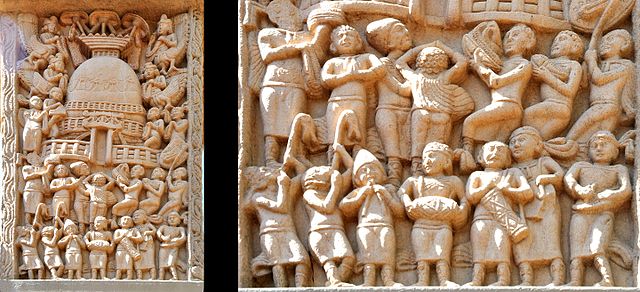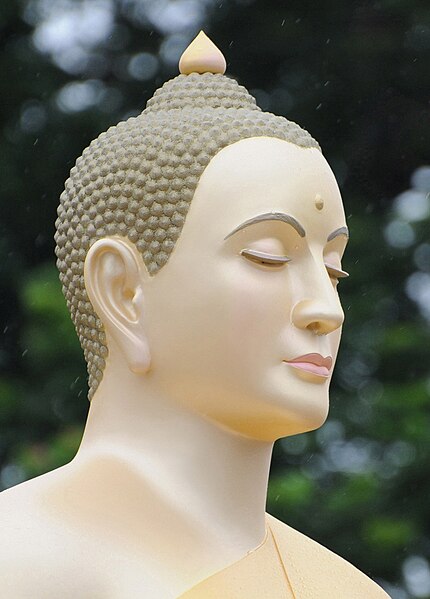Buddhist music is music created for or inspired by Buddhism and includes numerous ritual and non-ritual musical forms. As a Buddhist art form, music has been used by Buddhists since the time of early Buddhism, as attested by artistic depictions in Indian sites like Sanchi. While certain early Buddhist sources contain negative attitudes to music, Mahayana sources tend to be much more positive to music, seeing it as a suitable offering to the Buddhas and as a skillful means to bring sentient beings to Buddhism.
Relief of musicians from Sanchi
Tibetan illustration of Saraswati holding a veena, the main deity of music and musicians in Mahayana Buddhism
A musical ensemble with flute and an ancient Indian vina, from Amaravati
A relief depicting musicians at Chakhil-i-Ghoundi Stupa, Hadda, Afghanistan, 1st–2nd century CE
Devotion, a central practice in Buddhism, refers to commitment to religious observances or to an object or person, and may be translated with Sanskrit or Pāli terms like saddhā, gārava or pūjā. Central to Buddhist devotion is the practice of Buddhānussati, the recollection of the inspiring qualities of the Buddha. Although buddhānussati was an important aspect of practice since Buddhism's early period, its importance was amplified with the arising of Mahāyāna Buddhism. Specifically, with Pure Land Buddhism, many forms of devotion were developed to recollect and connect with the celestial Buddhas, especially Amitābha.
Head of a Buddha statue
Prostration is done as an expression of humility and an acknowledgement of the other's spiritual experience.
Buddhist offering incense to an image
Recitation of traditional texts is encouraged in many Buddhist traditions.








